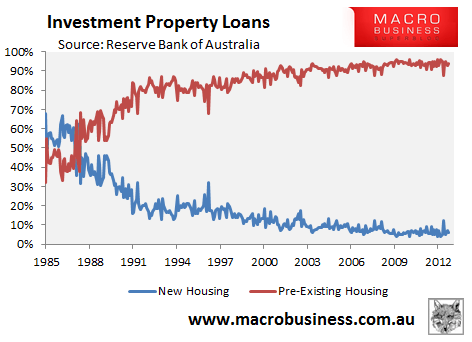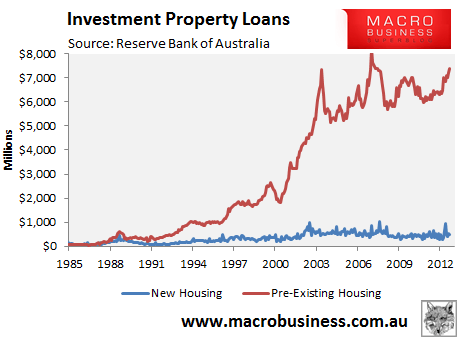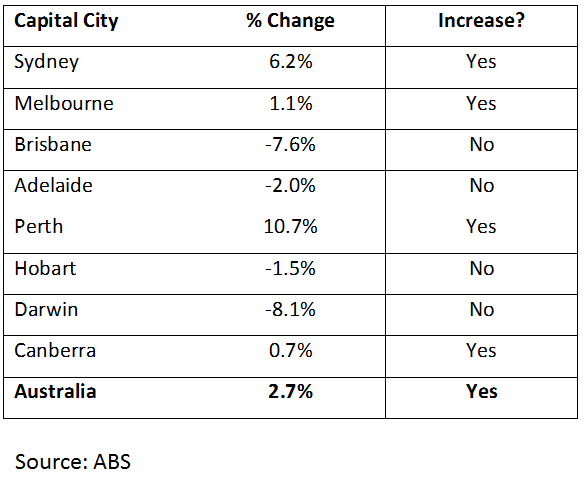
In a post-Budget newsletter last week, the “Barefoot Investor”, Scott Pape, questioned why Australia’s cash-strapped Federal Government had not considered scrapping negative gearing. From Property Observer:
“Our 1.25 million loss making landlords cost taxpayers $5 billion a year – a significant saving when the budget is in deficit of $18 billion,” writes Pape.
“And all it achieves is to make it harder for young people to compete to buy their first family home.
“Sadly, the government didn’t have the ticker to abolish it this year”…
Pape has long been a critic of negative gearing calling for its banning on talk back radio in 2011 and telling a negatively-geared listener that “negative gearing is really just a socially acceptable way of saying ‘I’m losing money’”…
“Contrary to real estate rhetoric, it does little to increase the supply of new homes, since the majority of investors buy established properties. What’s more, it costs the Australian taxpayer billions of dollars in forgone revenue,” he says…
Later in the week, well-known property investment advisor, Margaret Lomas, posted a stinging critique of Pape, arguing that the removal of negative gearing would cause dire consequences for the housing market, the economy, and society at large. Again, from Property Observer:
Lomas warned that removing negative gearing would cause a “sudden market crash” leave 600,000 homeless and a “government unable to house them under public housing programs”.
“Private housing is a must and removing the capacity to claim loan interest [under negative gearing allowances] would create far more problems than it solves,” she said…
Lomas said removing negative gearing rules –as Pape contends – would remove the ability for investors to claim the interest on their loan, “which is what negative gearing is”.
“Contrary to popular belief, removing it means you can still make tax claims for everything but the interest and probably more than half of them would sell,” she said.
Reading Lomas’ comments gives the impression that she has little understanding about what the removal of negative gearing would actually entail.
Australia is one of only a handful of countries that permits rental losses to be claimed against wage and salary income. If the Government was to modify the negative gearing rules so that they worked the same way as in most other developed economies, property investors would still be able to claim mortgage interest and other costs. The only difference would be that such costs could only be claimed against rental income, not unrelated wage and salary income, with losses carried forward into future tax years (similar to the way capital gains losses are treated).
Indeed, this is exactly what happenend between July 1985 and September 1987 when the Government “quarantined” negative gearing losses on new transactions, thereby only allowing investors to claim rental expenses against rental income, not other income.
Lomas’ claim that the removal of negative would leaving 600,000 homeless and a “government unable to house them under public housing programs” is also highly melodramatic and does not stand up to proper scrutiny.
Reserve Bank of Australia (RBA) data clearly shows that the overwhelming majority of investors – over 90% – buy pre-existing dwellings, not new dwellings, and that the proportion of investors buying new dwellings has fallen considerably since negative gearing was re-introduced in September 1987 (see next chart).

Moreover, the amount of investor funds going into new housing has barely shifted in 25 years:

Because investors primarily purchase pre-existing dwellings, negative gearing in its current form simply substitutes homes for sale into homes for let. As such, negative gearing has done little to boost the overall supply of housing or improve rental supply or rental affordability.
In the event that negative gearing was once again quarantined and a proportion of investment properties were sold, those properties would not suddenly vanish into thin air leaving a large number of people homeless. Rather, these homes would be sold to renters, turning them into owner-occupiers. And while the number of rental properties would be reduced, this substitution of renters into owner-occupiers would simultaneously reduce the demand for rental properties, leaving the overall rental supply-demand balance unchanged.
Perhaps this is why the quarantining of negative gearing between July 1985 and September 1987 had little discernible impact on the rental market, with inflation-adjusted rents rising in four markets and falling in four markets over that period (see next table).

Surely, if negative gearing was such an important determinant of rental market health, shouldn’t rents have risen Australia-wide when it was “abolished” in the 1980s, since negative gearing affects all rental markets equally?
Finally, Lomas’ claim that removing negative gearing would cause a “sudden market crash” also seems highly melodramatic and suggests that Australian property values are based more on generous tax policies and speculative demand by investors, rather than underlying fundamentals.
While negative gearing’s removal would reduce investor demand, placing downward pressure on prices and improving affordability for first home buyers, it’s important to remember that negative gearing is not allowed in most other jurisdictions, many of whom also experienced rapid house price growth and have expensive housing. As such negative gearing’s removal is not a ‘silver bullet’ for housing affordability, although it would certainly help.
As argued last time, negative gearing has few policy merits. It does little to boost supply, yet the additional demand from tax subsidised investors places upward pressure on home prices, worsening affordability for first home buyers. It also costs the government billions in lost tax revenue, which could be used to fund schools, hospitals, housing-related infrastructure, or any number of other worthwhile endeavours.
Soon we will release a detailed research report, available exclusively to MacroBusiness members, examining the latest Australian Taxation Office statistics on negative gearing at the national, state and territory levels.

